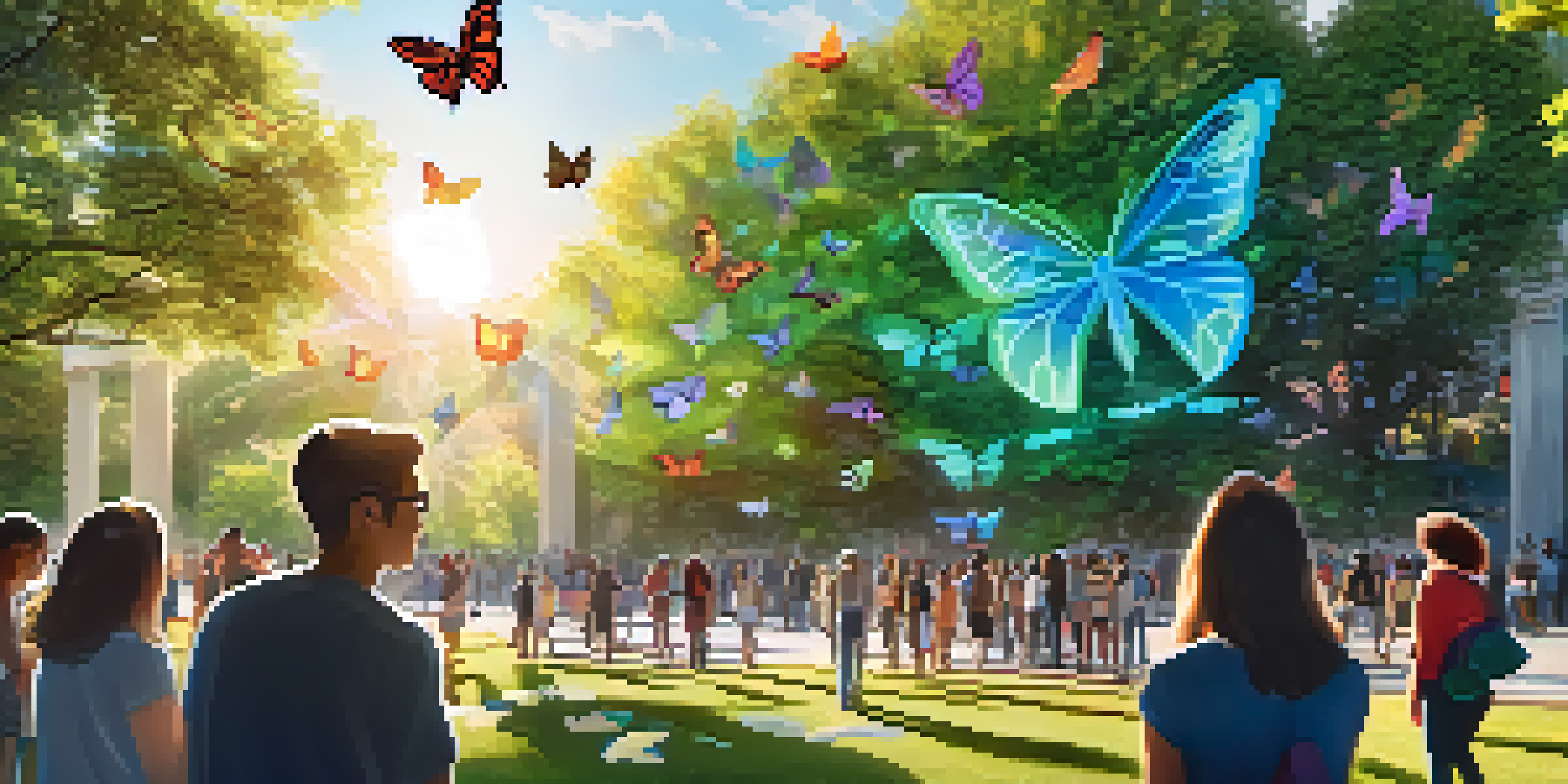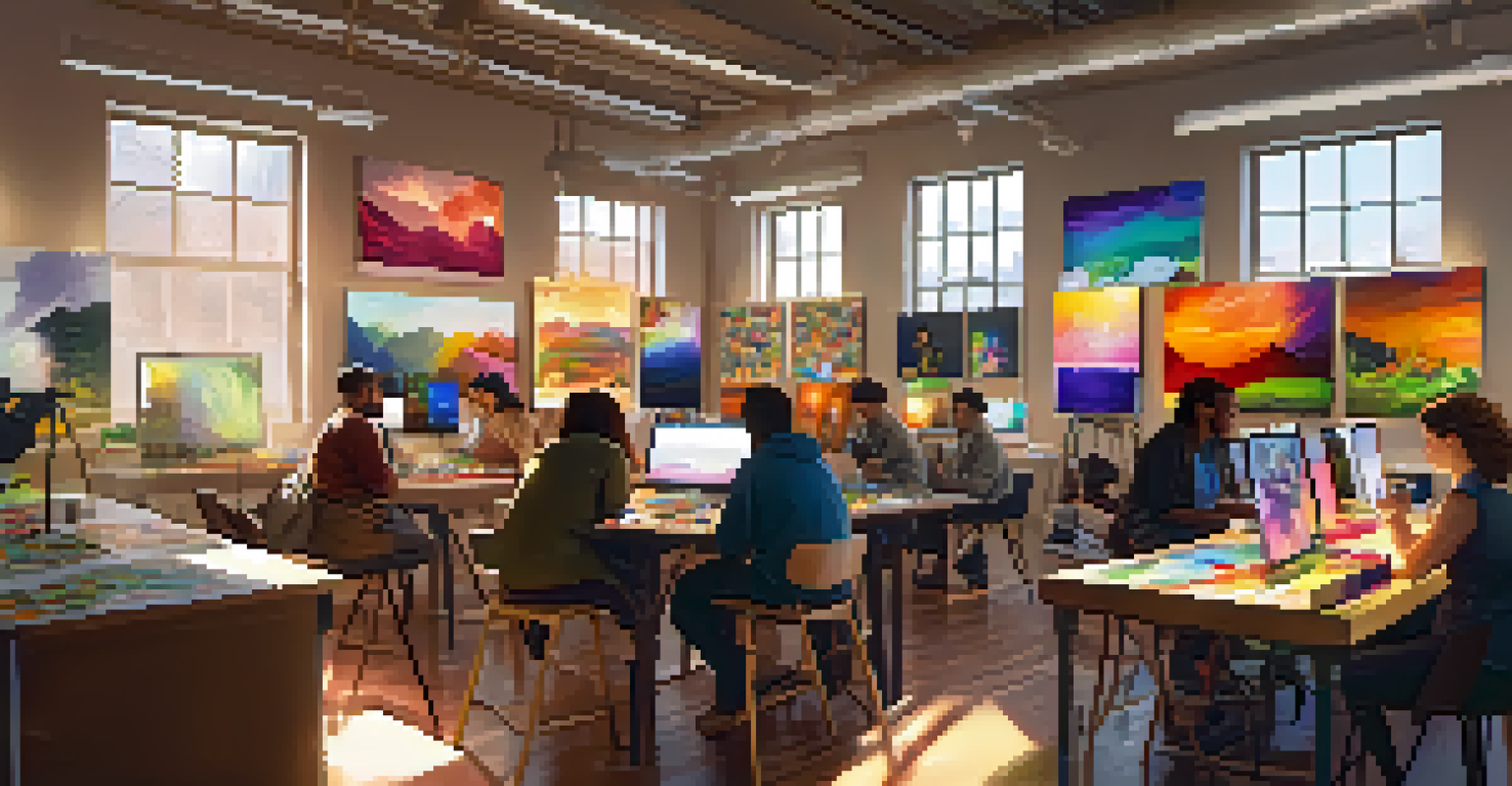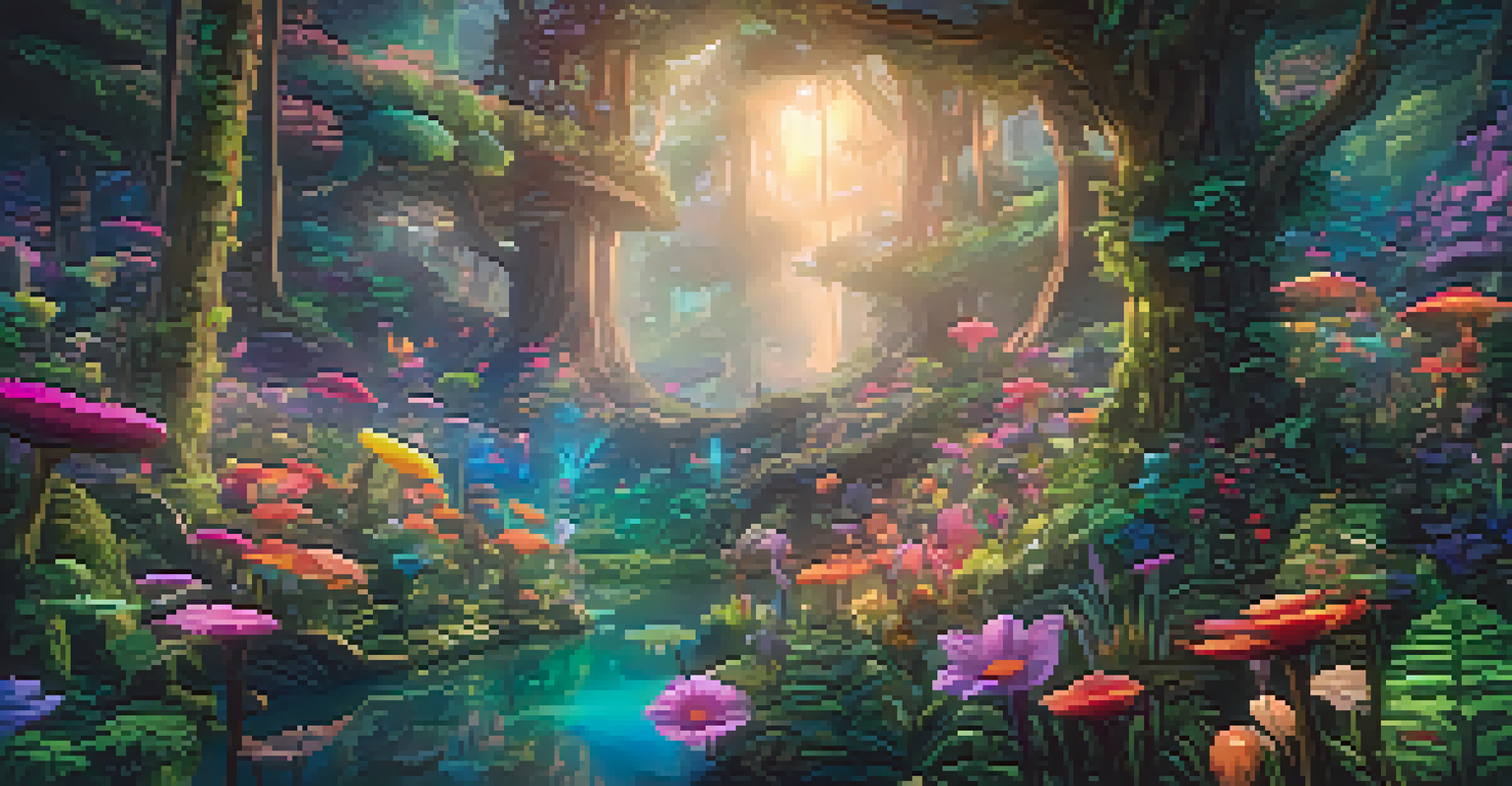Art and Technology: Engaging Communities in the Digital Age

The Intersection of Art and Technology in Modern Society
In today's world, art and technology are intertwined more than ever. Artists leverage digital tools to create stunning visuals, music, and immersive experiences that were once unimaginable. This fusion not only enhances creativity but also expands the boundaries of what art can be.
Art is not freedom from discipline, but disciplined freedom.
Take, for example, augmented reality (AR) art installations that allow viewers to interact with pieces in real-time. This technology transforms static experiences into dynamic ones, inviting audiences to participate rather than just observe. As a result, traditional art forms are evolving, offering new ways for people to engage.
Moreover, technology democratizes art by making it accessible to a wider audience. With platforms like social media and digital galleries, artists can share their work globally, breaking down geographical barriers. This accessibility fosters a sense of community, as art lovers connect over shared interests online.
Engaging Communities Through Digital Art Initiatives
Digital art initiatives are powerful tools for community engagement. Programs that invite local artists to create virtual murals or digital installations can foster a sense of pride and belonging among residents. These projects often encourage collaboration, allowing community members to contribute their ideas and stories.

Consider community-based projects like digital storytelling, where residents share their experiences through videos or interactive websites. These narratives not only celebrate local culture but also create a platform for diverse voices, promoting inclusivity and understanding within communities.
Art and Tech: A Creative Fusion
The integration of digital tools allows artists to create immersive experiences, transforming traditional art forms into interactive engagements.
Additionally, workshops that teach digital art skills can empower individuals, providing them with new avenues for expression. By equipping people with the tools to create, these initiatives cultivate a vibrant local art scene that reflects the community's unique identity.
The Role of Social Media in Art Engagement
Social media has revolutionized how art is shared and experienced. Platforms like Instagram and TikTok allow artists to showcase their work instantly, reaching audiences far beyond their local galleries. This shift has turned everyday users into art critics and curators, making art a shared experience.
The intersection of art and technology can create a powerful platform for social change.
Take the viral nature of art challenges or trends on social media; they engage both creators and audiences in a playful, collaborative manner. These trends often invite participants to reinterpret famous artworks or create original pieces based on themes, fostering creativity and community interaction.
Moreover, social media facilitates direct conversations between artists and their audience. Artists can share their processes, inspirations, and challenges, creating an authentic connection that deepens appreciation for their work. This interaction not only humanizes the artist but also encourages a supportive community.
Virtual Reality: A New Canvas for Artistic Expression
Virtual reality (VR) is pushing the boundaries of artistic expression, providing immersive experiences that engage audiences like never before. Artists can create entire worlds that viewers can explore, making art a multi-sensory experience. This technology opens up possibilities for storytelling that traditional mediums can't match.
For instance, VR installations can transport viewers to different environments, allowing them to experience art in a new light. Imagine walking through a vibrant forest created by an artist, where each step triggers visual and auditory elements. This level of engagement captivates audiences and invites deeper emotional connections.
Community Engagement through Art
Digital art initiatives foster community pride and collaboration, empowering individuals to express their unique identities and stories.
As VR continues to evolve, it holds the potential to transform how we experience culture and art. By breaking down barriers of physical space, it allows for unique interactions that can unite people from various backgrounds, sparking conversations and fostering community bonds.
Art as a Medium for Social Change in the Digital Space
Art has always been a powerful vehicle for social change, and in the digital age, this role is amplified. Artists can leverage technology to highlight social issues, rallying communities around causes that matter. Digital platforms enable art to serve as a catalyst for conversation and action.
Consider campaigns that utilize digital art to raise awareness about climate change or social justice. These initiatives can reach a global audience, igniting discussions that inspire individuals to take action in their own communities. By harnessing the power of art, these movements can motivate change on a larger scale.
Moreover, online galleries and social media campaigns can spotlight marginalized voices, ensuring that diverse perspectives are heard. As more artists use their platforms to advocate for social justice, they encourage empathy and understanding, ultimately fostering a stronger, more connected community.
The Future of Art and Technology: What Lies Ahead?
As technology continues to advance, the possibilities for art are boundless. We can expect to see more innovative collaborations that blend creativity with tech, pushing artistic boundaries even further. This evolution will likely lead to new art forms and experiences that we can only begin to imagine.
For example, artificial intelligence (AI) is already being used to create music and visual art, raising questions about authorship and creativity. As AI technology evolves, it may collaborate with human artists, resulting in unique works that challenge our understanding of art.
Social Media Revolutionizes Art Sharing
Platforms like Instagram and TikTok enable artists to connect directly with audiences, turning art into a shared, interactive experience.
Ultimately, the future of art and technology will be shaped by the communities that engage with it. As artists and audiences continue to interact, they will drive innovation and redefine what it means to create and experience art in a digital world.
Building Bridges: The Importance of Community Collaboration
Community collaboration is key to successful art and technology initiatives. By bringing together diverse voices, communities can create richer, more inclusive experiences that resonate with everyone. Collaborative projects often lead to stronger connections and a shared sense of ownership over the final outcome.
For instance, public art projects that involve local schools, businesses, and residents can create a sense of pride and unity. When people contribute their ideas and efforts, they feel more invested in the art, fostering a deeper appreciation and connection to the community's cultural landscape.

Moreover, these collaborations can spark creativity and innovation. When different perspectives come together, they can lead to unique solutions and artistic expressions that might not emerge in isolation. The result is a vibrant, dynamic art scene that reflects the community's spirit and values.